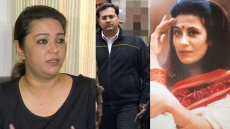India is doing "extremely well" on electrification with nearly 85 per cent of the country's population having access to electricity, the World Bank has said.
Between 2010 and 2016, India provided electricity to 30 million people each year, more than any other country, the World Bank said in its latest report released this week.
While challenges still remain to provide electricity to the remaining 15 per cent of the approximately 1.3 billion population, India is all set to achieve the target of universal access to electricity before the 2030 target date, Vivien Foster, Lead Energy Economist at the World Bank told news agency.
The report comes less than a week after Prime Minister Narendra Modi announced that all the villages in the country have been electrified. The report said that nearly 85 per cent of the country's population has access to electricity.
"India is doing extremely well on electrification. We are reporting India about 85 per cent of the population has access to electricity," said Foster, lead World Bank author of the latest report on Energy Progress.
This figure, she pointed out, is higher than that of the Indian government. "That might surprise you. The government is currently reporting in low 80s," she said.
I salute the efforts of all those who worked tirelessly on the ground, including the team of officials, the technical staff and all others, to make this dream of a #PowerfulIndia a reality. Their efforts today will help generations of Indians in the coming years. pic.twitter.com/t8WjZgpNuT
— Narendra Modi (@narendramodi) April 29, 2018
28th April 2018 will be remembered as a historic day in the development journey of India. Yesterday, we fulfilled a commitment due to which the lives of several Indians will be transformed forever! I am delighted that every single village of India now has access to electricity.
— Narendra Modi (@narendramodi) April 29, 2018
While the World Bank's methodology is based on household survey, which includes even those who are off grid, while the figures of the government is based on official utility connection, she said.
"In absolute terms, India is doing more on electrification than any other countries. Thirty million a year, is really an astounding performance and it stands out from the crowd," Ms Foster said.
However, India is not the fastest country in electrification. Bangladesh and Kenya, for example are faster in electrification than India, she noted.
India, she said, is now entering the final stage of electrification.
"You are already well over 80 per cent, so you're getting into the more difficult aspects of electrification: the more remote population, the harder to reach people," she explained.
However, reliability of service is an area of concern for India, she said.
"We know that in some parts of India or having the connection doesn't necessarily guarantee the energy's reliable supply. So, getting the connection obviously is very important, but India still has a long way to continue to work on actually making that access meaningful in terms of hours of service," Ms Foster said.
Referring to India's tremendous electrification effort, the report said it expects 250 million people gaining electricity access between now and the early 2020s, when the country reaches full access.
The rapid growth of electricity access in India is propelled by the country's $2.5 billion electrification programmes to reach universal electrification, the report said.



